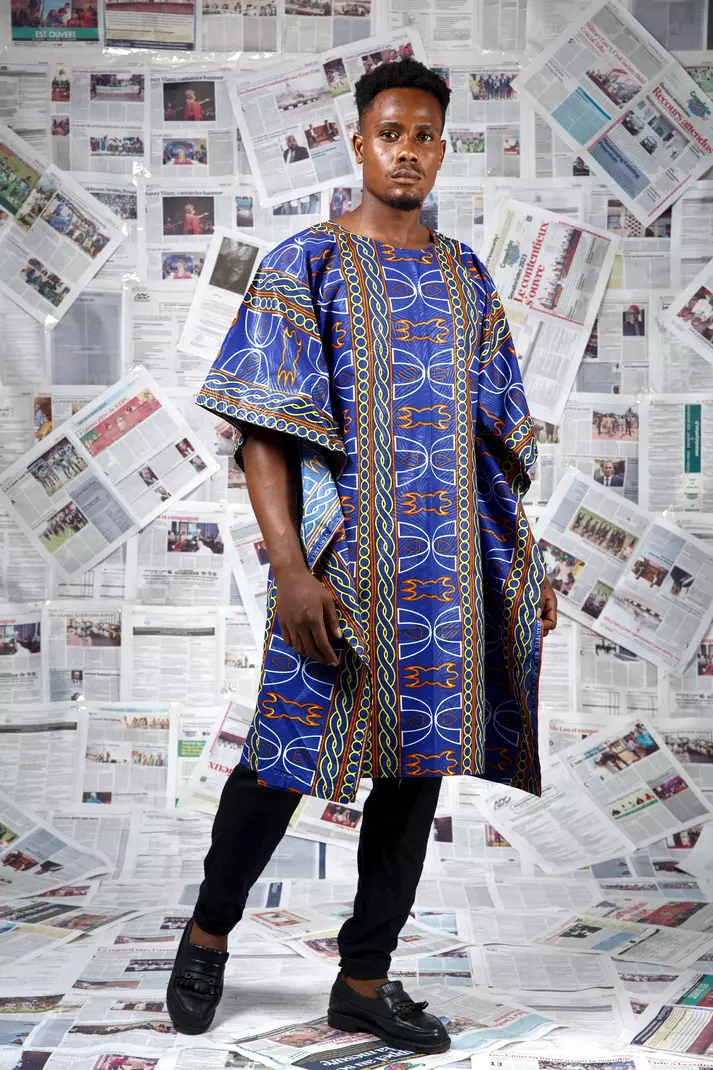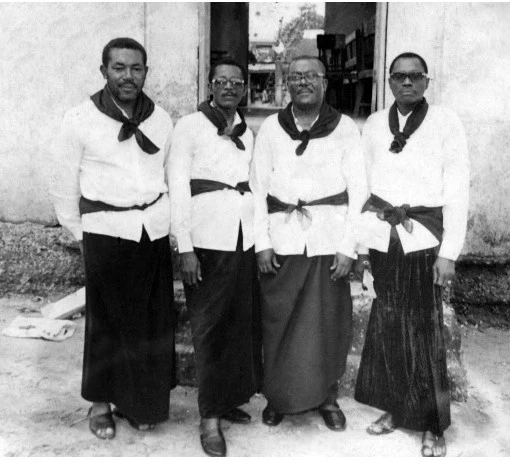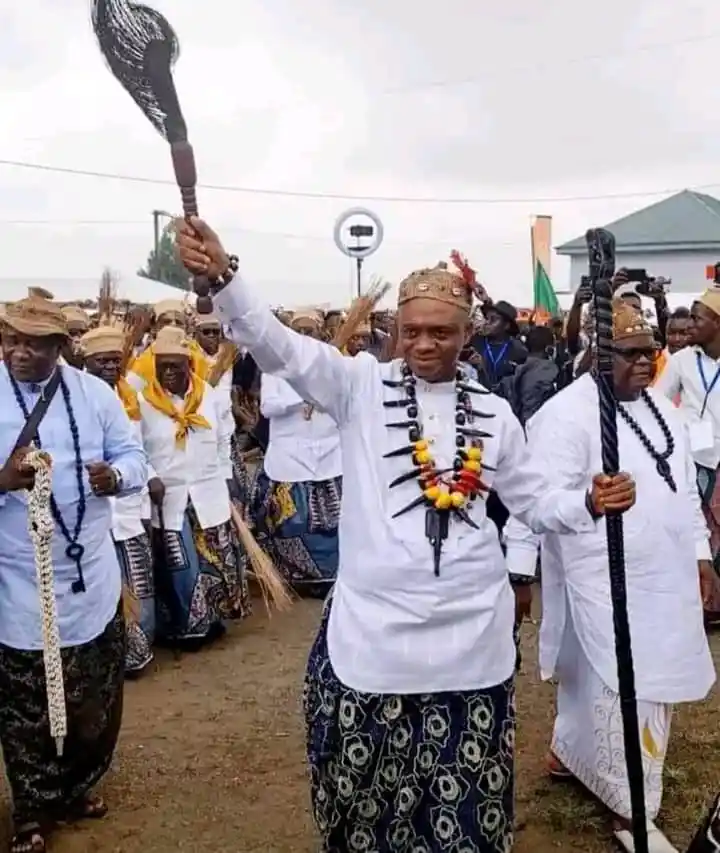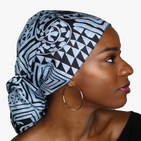Cameroon, often called "Africa in miniature," boasts diverse fabrics and clothing styles that reflect its rich cultural heritage. Cameroonian fashion stands out for its profound cultural significance, from traditional ceremonies to official events. The ceremonial outfits, characterized by imagination and intricate designs, utilize vibrant colors, creative cuts, beads, and embroidery, reflecting the nation's past and modern identity.
Grand Boubou
The Grand Boubou, also known as "Babban Riga," is a traditional garment prevalent in various regions of Cameroon, particularly in the Northern and Western parts. This long, loose-fitting tunic, commonly made of cotton or linen, features long sleeves and a round neckline. When worn by Cameroonian royalty, the Babban Riga is crafted from luxurious materials and embellished with intricate embroidery or beading, often showcasing unique patterns or colors specific to the royal family.
Versatile in its use, the Babban Riga is suitable for men, women, and children and can be adorned with various decorative elements, including embroidery. Over time, Cameroonian designers have demonstrated creativity by crafting contemporary versions of the traditional Babban Riga, blending traditional elements with modern aesthetics. Typically accompanied by a matching hat called "Chechia," this ensemble is crafted from materials like Wax, Bazin, other printed loincloth textiles, or traditional fabrics such as Ndop, Atoghu, and Toghu. The Grand Boubou has seamlessly integrated into the clothing habits of Cameroonians and is now embraced across the entire country.
Kaba Ngôndô
Kaba Ngôndô is primarily worn in the country's coastal, southwestern, and central parts but is popular among Cameroonian women. The garment is a long, flowing dress with or without sleeves, often made from brightly colored loincloth, silk, cotton, Wax, Bazin, or traditional fabrics like Toghu, Ndop, and Atoghu featuring intricate embroidery or beading. The garment is typically worn for special occasions such as weddings, christenings, funerals, and other cultural events. It is often accessorized with a head wrap, jewelry, and sometimes a shawl or scarf.
From the Kaba Ngôndô stems another variety of styles, including Kaba and Slit, which consist of a long, flared skirt paired with a matching blouse, and Kaba Avion, a flowing dress just above or below the Knee with an intricate design of an airplane's wings. Another is the mini Kaba, also known as "Kaba cellular."
Sanja
The Sanja is distinctively worn among Sawa men in the Littoral, but most tribes in the Littoral and Southwest adorned it. It carries cultural significance and helps distinguish individuals from both regions. Sawa men often wear a black loincloth, "Sanja," a white shirt, a scarf, "Wangisi" draped around the neck and hips, black sandals, "Silipasi," and a chechia adorned with feathers and cowries
Chiefs wear the Sanja with a unique design, cowrie-adorned hat, and symbols of authority, setting them apart as revered figures. This garment is essential to Sawa's identity, connecting them to their heritage. South West men wear the same attire with different colors.
Hats and Head Wrappers
A diverse collection of hats and head wraps highlights Cameroon's rich cultural tapestry. Traditional hats vary across regions and ethnic groups, showcasing unique designs and materials that reflect local heritage. Whether it's the distinctive Fulani straw hats adorned with colorful threads or intricately woven Bamileke hats representing status, these headpieces offer a glimpse into the nation's diverse traditions.
Head wraps, locally known as "foulard," play a vital role in Cameroonian women's attire, going beyond mere fashion accessories. They symbolize cultural identity and pride, with women skillfully tying and arranging them in various styles, using a range of fabrics and patterns that convey different meanings or mark specific occasions. Cameroonian head wraps exemplify the beauty of tradition evolving with the times, worn for everyday elegance, festive celebrations, or formal ceremonies.
Cameroon celebrates cultural unity and diversity through its diverse traditional garments, such as Gandoura, Kaba Ngôndô, Sanja, and hat styles. These clothing choices reflect the unique identities of various ethnic groups and symbolize national unity. Clothing is now embraced by all, transcending tribal and regional boundaries and fostering a sense of shared heritage. Proudly wearing traditional attire, Cameroonians create a tapestry of shared values and history, bridging gaps among communities. The country honors its roots while embracing modern influences, recognizing the power of traditional attire in unifying the nation and showcasing cultural splendor.
As traditional garments unfurl, the soul of Cameroon's cultural tapestry dances into view, weaving a narrative that bridges the past and future. - La Djalobienne Eton
References:
























